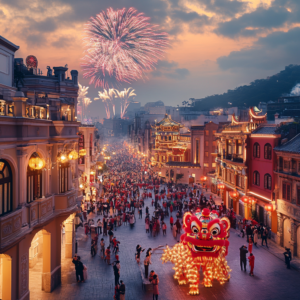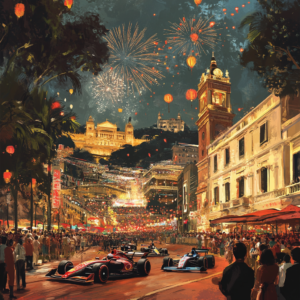
Macau’s rich and diverse history has left it with a wealth of historic sites and buildings to explore. The most famous of these are concentrated in the Historic Centre of Macau – a UNESCO World Heritage site. These are some of the top historical attractions you may want to consider when visiting Macau.
Most of the UNESCO sites are concentrated around Senado Square and the Ruins of St Paul’s, with some tendrils spreading out to other locations a relatively short walk away. However, there are many more interesting historical attractions if you are prepared to explore just a little further into Macau.
- Carmo Fair (Taipa Old Market)
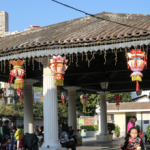 Continue reading
Continue readingThe Taipa market was constructed by the Macau government on 14th September 1886 at a cost of 800,000 Reis (about MOP1,600) which was split between the Public Works Bureau and the Taipa and Coloane Municipal Commission.
- Dom Pedro V Theatre
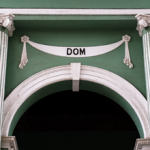 Continue reading
Continue readingDom Pedro V Theatre (Teatro Dom Pedro V, 伯多祿五世劇院) was one of the first western style theatres in eastern Asia. It is situated in St Augustine’s Square (a short walk from Senado Square), where it is in good company standing alongside St Augustine’s Church, St Joseph’s Seminary and Church and the Sir Robert Hung Library.
- Guia Fortress And Lighthouse
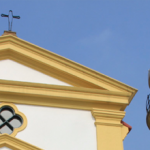 Continue reading
Continue readingGuia Fortress And Lighthouse (Fortaleza da Guia, 東望洋炮台) is a 17th Century military fort standing atop Guia Hill – the highest point in Macau. Now surrounded by a park, it encompasses a fort, chapel and lighthouse complex.
- Happiness Street
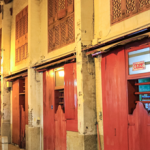 Continue reading
Continue readingWalk up the Calcada do Tronco Velho from end Square, if you turn right – you will see Happiness Street (Rua da Felicidade). A pretty little street which was in the past the centre of Macau’s nightlife. Today, the facades of the traditional China Coast buildings have been restored, with many small shops and cafes.
- History Timeline of Macau
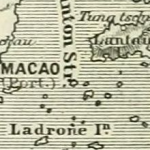 Continue reading
Continue readingThe following list gives a History Timeline of Macau. I’ll expand on it and add more photos, supporting material and links as the website as a whole develops.
- Holy House of Mercy
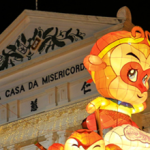 Continue reading
Continue readingThe Holy House of Mercy (Santa Casa da Misericórdia, 仁慈堂大樓) on Senado Square was built in 1569 on the orders of the Bishop of Macau as a branch of the Santa Casa da Misericórdia.
- Leal Senado
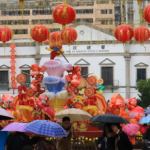 Continue reading
Continue readingOverlooking Senado Square, Leal Senado (Loyal Senate) was the seat of the Portuguese government in Macau.
- Lilau Square
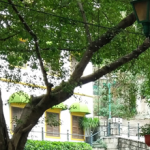 Continue reading
Continue readingLilau Square (Largo do Lilau, 亞婆井前地) is a small square which sits in what was one of the first Portuguese residential areas in Macau. It has a relaxed, Mediterranean feel, which sits in contract to the typical Cantonese architecture of the Mandarin’s House complex which lies just around the corner, but at the same time also displays the fusion between the two styles.
- Lou Kau Mansion
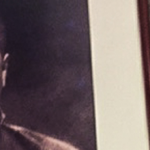 Continue reading
Continue readingThe Lou Kau Mansion (Case de Lou Kau 盧家大屋) is the former residence of a prominent local merchant who lived in Macau at the end of the 19th Century.
- Macao Museum
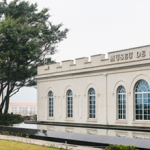 Continue reading
Continue readingMacao Museum (Museu de Macau, 澳門博物館) details the history of Macau and is built on the site where the former Meteorological Service was located.
- Mandarin’s House
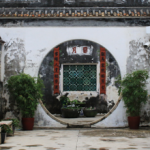 Continue reading
Continue readingThe Mandarin’s House (鄭家大屋) was the residence of the Qing theoretician and reformist, Zheng Guanying (1842-1921). Built largely in the Cantonese style, it is noted for its fusion of western architectural elements.
- Monte Forte
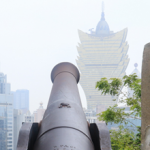 Continue reading
Continue readingMonte Fort (Fortaleza do Monte, 大炮台), or the ‘Fortress of Our Lady of the Mount of St. Paul’ is the historical military centre of Macau.
- Moorish Barracks
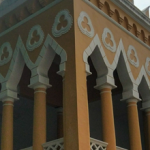 Continue reading
Continue readingThe Moorish Barracks (Edifício da Capitania dos Portos, 港務局大樓) was built in 1874 in order to accommodate a regiment from Portuguese held Goa, India, who were brought over to reinforce Macau’s police force.
- Museum of Taipa and Coloane History
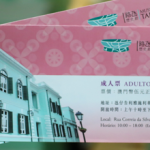 Continue reading
Continue readingThe Museum of Taipa and Coloane History (Museu da História da Taipa e Coloane, 路氹歷史館) is located in Taipa village, housed in what used to be the Island Municipal Council building (and old public administration center). The original building dates from the 1920s, built in the Portuguese style.
- Ruins of St. Paul’s
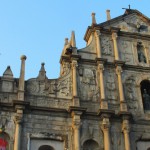 Continue reading
Continue readingOne of the most recognisable landmarks in Macau, the Ruins of St. Paul’s (大三巴牌坊) are all that remains of a 16th century complex which included the Church of St Paul (Mater Dei) and St Paul’s College. The college was one of the largest in Asia when it was first built, at a time when Macau was the main port in the Pearl River Delta (before being overtaken by Hong Kong).
- Section of the Old City Walls
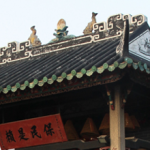 Continue reading
Continue readingThe Section of the Old City Walls are the remains of a wall that surrounded the city of Macau in the 16th and 17th centuries when it first became a colony of Portugal.
- Senado Square
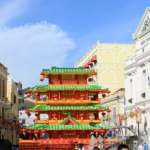 Continue reading
Continue readingSenado Square (Largo do Senado, 議事亭前地) is a beautiful paved square in historic downtown Macau. The Portuguese influence is everywhere here, with beautiful old pastel coloured buildings surrounding it, giving it something of a Mediterranean feeling. It was added add a UNESCO World Heritage site in 2005.
- St Augustine’s Square
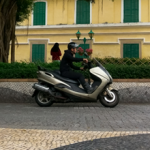 Continue reading
Continue readingSt Augustine’s Square (Largo de Santo Agostinho) is a traditionally paved small square which lies close to Senado Square, and is surrounded by a number of buildings which form part of the Historic Centre of Macau: St Augustine Church, St Josephs Seminary and Church, Dom Pedro V Theatre and Sir Robert Ho Tung Library.
- St Lawrence Church
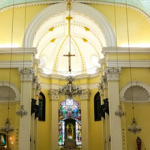 Continue reading
Continue readingSt Lawrence’s Church (Freguesia de São Lourenço) is possibly the richest and most beautiful church in Macau, both for its decoration and the religious objects within it.
- St. Dominic’s Church
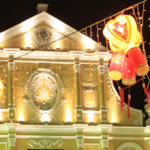 Continue reading
Continue readingSt. Dominic’s Church (Igreja de São Domingos, 玫瑰堂) was established in 1587 by 3 Spanish Dominican priests who arrived in Macau from Acapulco, Mexico, this church has been the scene of several violent incidents.



